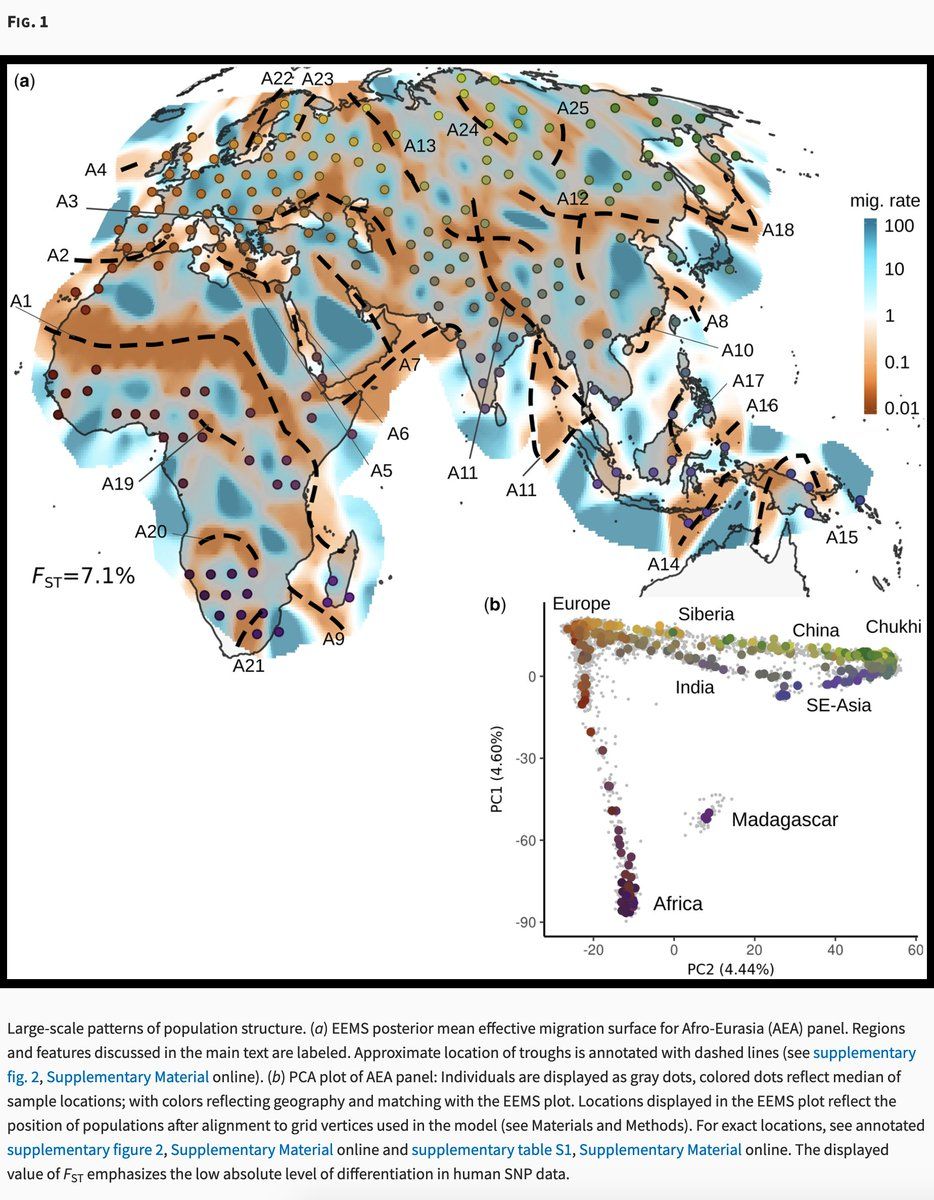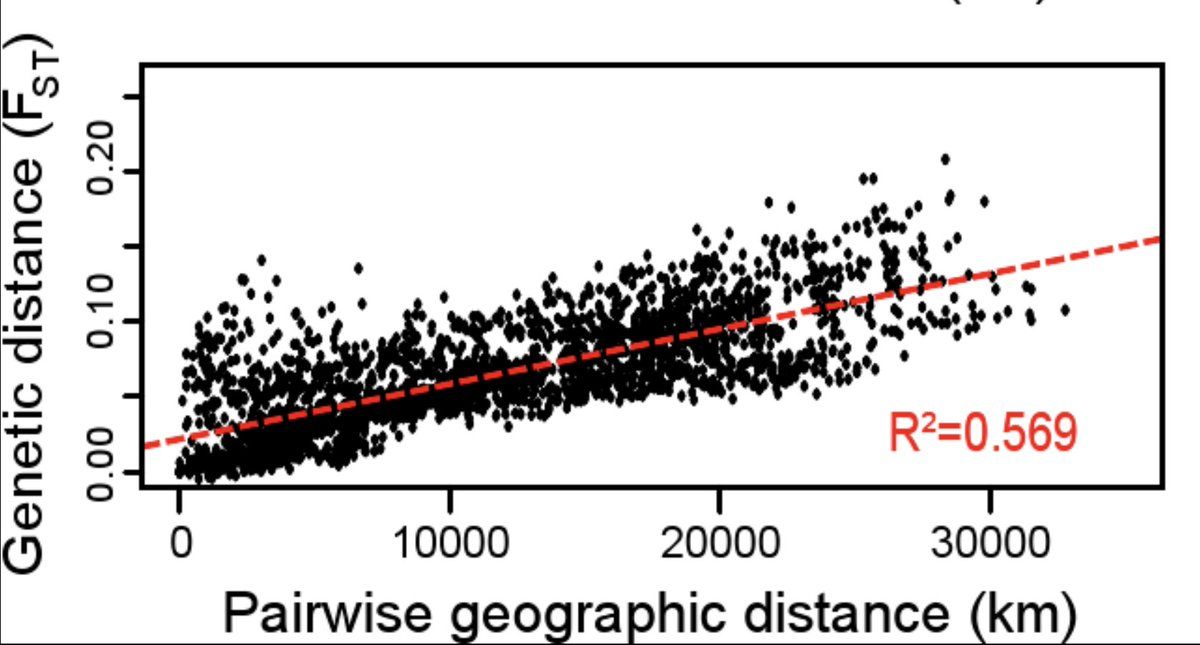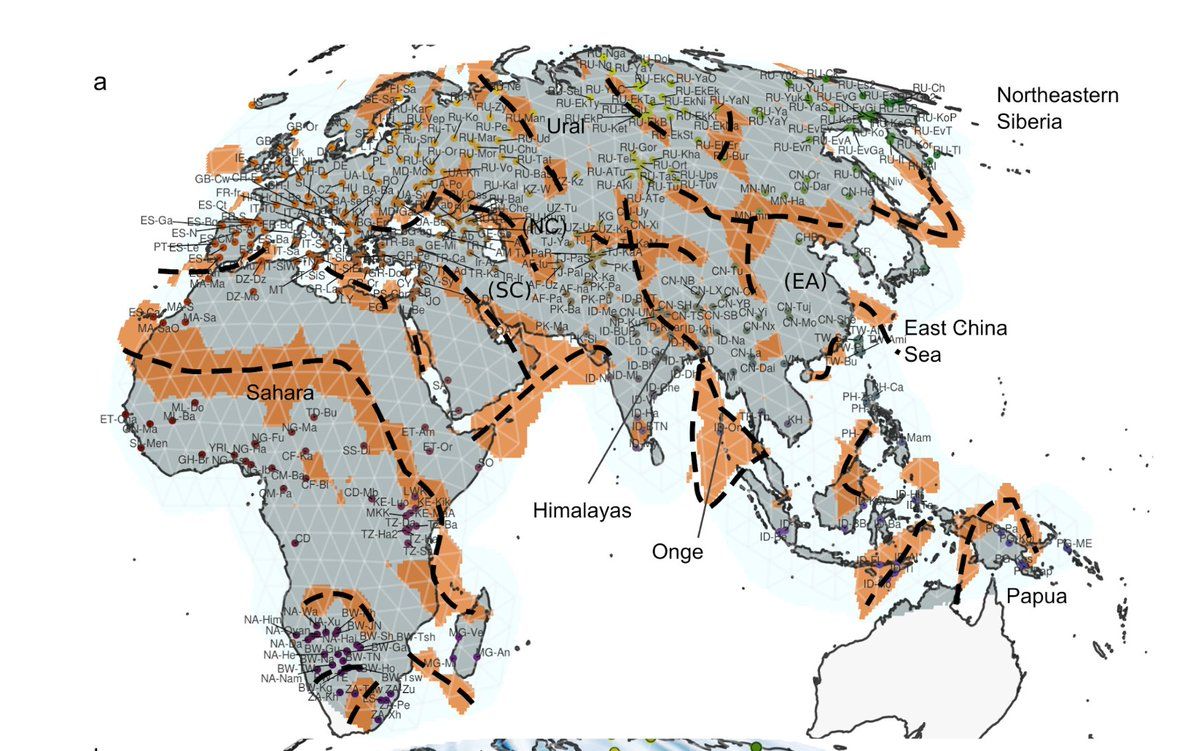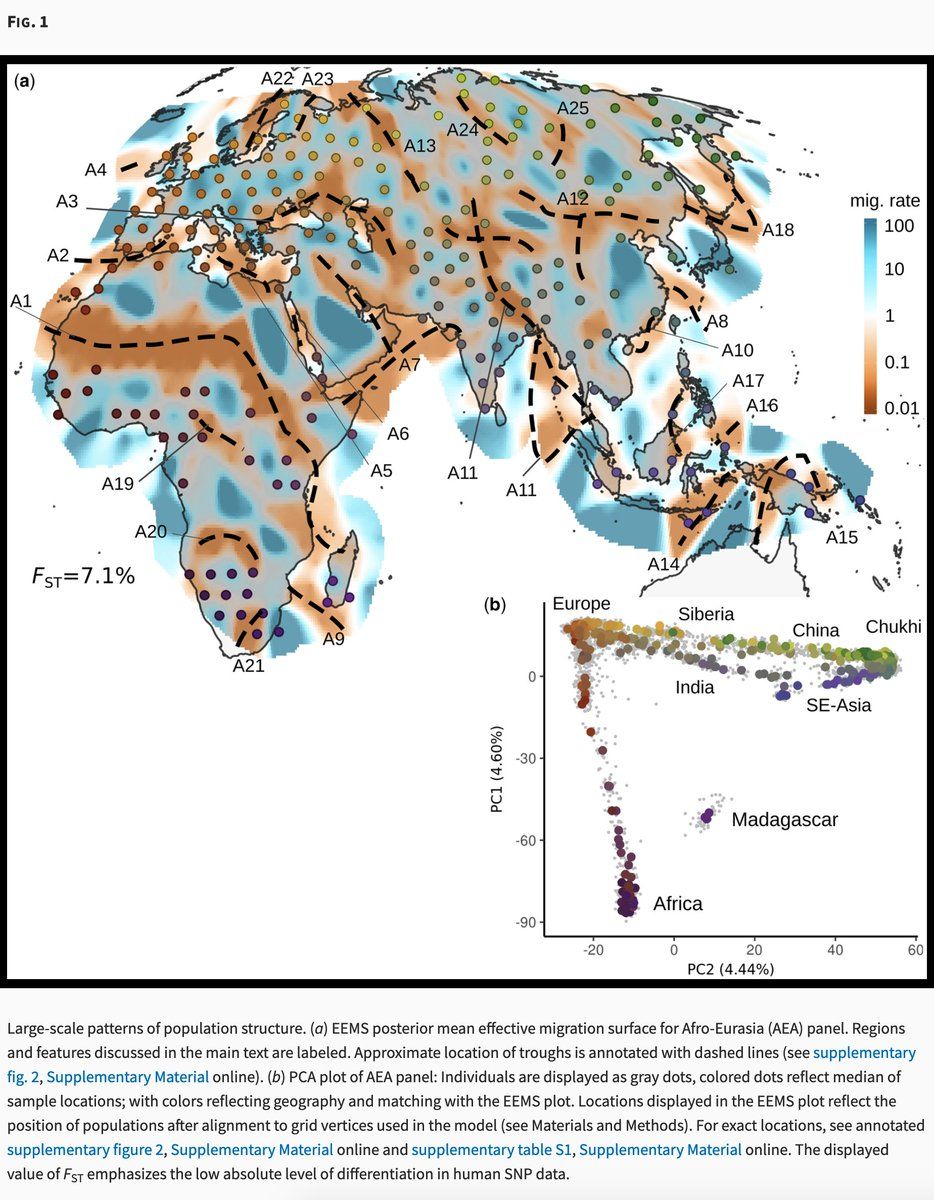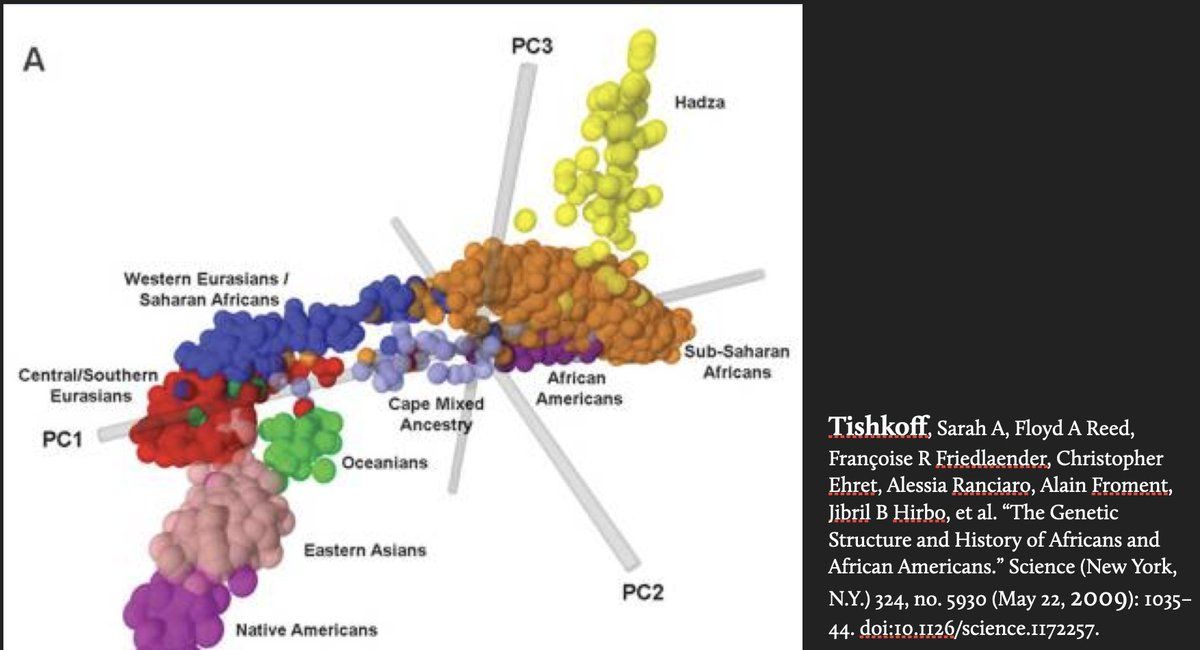-
Article is "Genetic Landscapes Reveal How Human Genetic Diversity Aligns with Geography" by Benjamin M Peter, Desislava Petkova, and John Novembre academic.oup.com/mbe/article/37/4/943/5645183
-
Isolation-by-distance is a way of explaining genetic variation by the mere fact that people who are geographically closer to one another are more likely to have children together. It explains a continuum of variation better than a race-based model.
-
Isolation-by-distance produces broad but rough correlation btw the walking distance between populations and their degree of genetic difference. Here's the correlation among 1478 individuals in 78 populations. From Kanitz et al 2018: journals.plos.org/plosone/article/figure?id=10.1371/journal.pone.0192460.g001
-
Scientists (and practical folks generally) acknowledge that not all footsteps are the same / some landscapes are easier to traverse than others. The new Peter et al 2020 paper attempts to quantify that ease/difficulty across geography.
-
"We see that 19 out of 25 troughs visually align with plausible topographical obstacles to migration, such as deserts, seas, marine straits and mountain ranges or a combination thereof."
-
"The remaining seven troughs (A19–A25) are found across Central Africa, Southern Africa, Scandinavia, and Siberia. [between] agricultural-based populations in relatively close proximity to traditionally hunter–gatherer or pastoralist populations."
-
So physical geography and cultural differentiation explain all of the observed barriers to gene flow.
-
The article also consistently explains the relatively small scale of inter-region genetic variation, about 7.1% of all genetic variance at the Afro-Eurasia scale and smaller amounts in subregions.
-
Not as obvious from their graphs (except the PCA graphs in the corner) is the huge scale of intra-African variation.
-
To caption that last graphic, many East and Saharan Africans are genetically closer to western Eurasian populations (in the principal component analysis) than to some (but not all) sub-Saharan Africans…
-
But that genetic distance is spanned by longstanding African populations and last-half-millennium "novel" populations in South Africa and the Americas.
-
Also, genetic differences within a handful of African hunter-gatherer peoples and their neighbors are on the same scale as all genetic variation from W Europe east and south to Tierra del Fuego, which are themselves smaller than intra-African variation.
-
TL;DR: proximity and physical geography explains human genetic variation strikingly well. "Race" explains it poorly if at all.
-
Tishkoff (@SarahTishkoff) and colleagues 2009 paper is here: ncbi.nlm.nih.gov/pmc/articles/PMC2947357/
